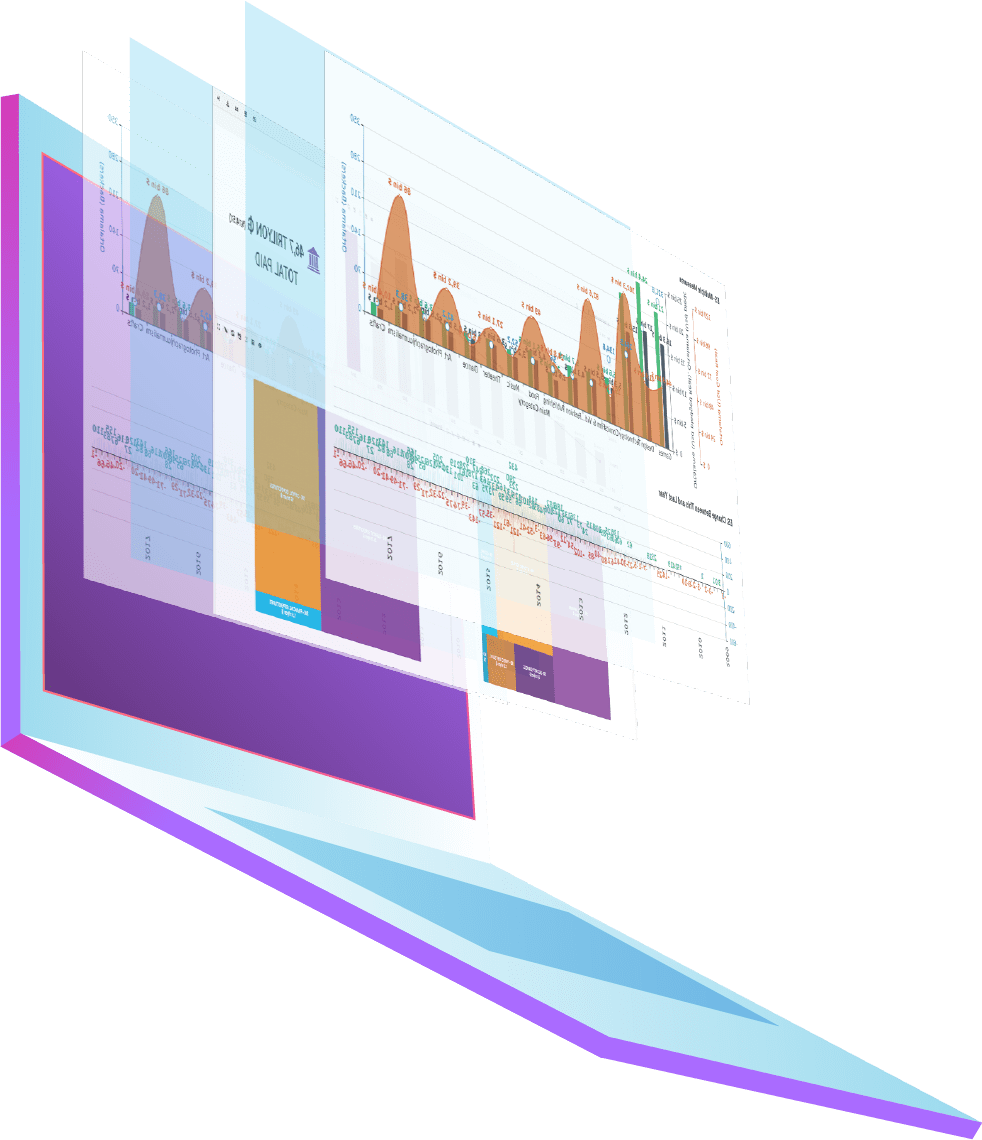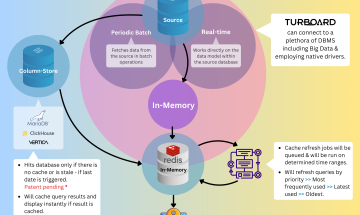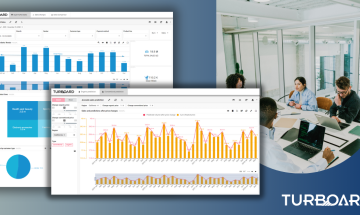
Today’s businesses demand more from their executives than ever before. In order to succeed, top-tier leaders need an edge in the relentless race for market share, profit growth, and a seat at the table when strategic decisions are made. Business Intelligence (BI) can give you that edge. BI is all about getting the right information in the right format at the right time so that you can make informed decisions. It’s also about making sure your business is running efficiently, with measures in place to keep it that way. Proactive action is crucial for the success of any business, large or small. By taking the initiative to implement new strategies and processes, you can stay ahead of the competition and better navigate any challenges that may arise. On the other hand, waiting until everything is perfect can leave you behind and make it more difficult to catch up. Don't let the opportunity to make positive changes pass you by – start taking action now.
What is Business Intelligence and Why is it so Important?
Business Intelligence (BI) is a set of techniques and tools for the collection, integration, analysis, and presentation of business data. It describes the process of using data to inform decisions, inform strategy, and drive outcomes for business leaders. The ultimate goal of BI is to unlock the value of your data to enable better decision-making, identify follow-on actions, and improve efficiency.
The importance of BI can be seen in many different areas of an organization. For example:
- BI helps organizations to understand their customers and their needs. By analyzing customer data, organizations can gain insights into customer behavior, preferences, and satisfaction levels. This information can be used to improve customer service, develop new products and services, and increase customer retention.
- BI can help organizations to identify trends and patterns in their business data. By analyzing data over time, organizations can detect changes and trends in their sales, revenue, costs, and other key metrics. This information can be used to predict future performance and make better business decisions.
- BI can improve the efficiency and productivity of an organization. By analyzing data from different departments and functions, organizations can identify areas where they can improve their processes and reduce waste. This can help to reduce costs and increase profitability.
- BI can help organizations to gain a competitive advantage. By analyzing data from competitors and the market, organizations can identify opportunities for growth and innovation. This information can be used to develop new strategies and tactics to stay ahead of the competition.
Get an Understanding of Your Organization’s Data
To make data-driven decisions, it is important to have a full understanding of the current data of your company. This requires being familiar with what type of data you have, where it is stored, and how it is structured. Do not allow an incorrect or incomplete data set to hold you back – it is important to allocate enough time to gain a solid understanding of your company's data assets in this regard. Afterwards, you can identify gaps and areas for improvement and develop strategies to better utilize your current data.
Start with the Most Important Questions
When developing a Business Intelligence strategy, it is crucial to be aware of the questions you wish to have answered before beginning a detailed analysis. If you don't know where to begin, you can end up conducting a lot of pointless analysis without gaining much benefit. What are the most crucial and important questions you seek answers to? Which questions do the relevant stakeholders in your business want answered? Which questions are the rivals of your business responding to? To start, you can use a visual to respond to these questions. You can rapidly spot trends and draw links between various topics with the use of visuals. They can also assist you in finding significant patterns or insights in your data.
Use BI Platforms to Get Faster Results
BI has become essential for organizations that want to make data-driven decisions and improve their performance. By providing insights into business operations and performance, BI can help organizations to identify areas for growth, uncover new business opportunities, delight customers, grow and succeed in today's modern fast-paced and competitive business environment. For these reasons, hundreds of ready tools, systems and platforms designed to help businesses view all of their data in a single location have been made available at hand in the past few years. BI platforms provide easy access to your data, allowing you easily to get started on your journey to BI. There are many different tools and platforms available for business intelligence, ranging from spreadsheet software to specialized BI platforms. You can use an on-premise or cloud-based BI platform to integrate your data sources, create a unified view of your data, and build visualizations that can help you answer your key questions.
Stay on Top of Changes With Real-Time Reports
Real-time reporting is extremely vital for businesses of all sizes. By giving you access to data and metrics as soon as they're available, you can make better, more informed decisions. With real-time reporting, you can track key performance indicators in real time, allowing you to take necessary actions as soon as something triggers an alert. This means you can be more proactive in your decision making, rather than reacting to changes after the fact. You can use real-time reporting to see which customers are complaining or requesting certain products, or where your sales representatives are spending the most time. By having access to up-to-date metrics, decision-makers can immediately see how the business is performing and where it needs to improve. And with automated alerts, you can be sure that everyone is notified of any changes or potential issues as soon as they arise. For example, you can set up an email trigger to send an email whenever analytical predictions reveal consequential information such as your inventory getting to critical levels within 3 days.
Choose the Right BI Platform
Some of the best BI platforms can get you started on your BI journey with a few clicks, while others require a dedicated technical team and data analysts. Some may not perform well in big data, while others may not have richer and more flexible visualization and analysis features. When choosing a BI platform, it's important to consider the size and complexity of your data, as well as the types of data you need to analyze. User experience is also key - look for a platform that is easy to use, with a user-friendly interface and good customer support. Additionally, ensure that the platform integrates easily with your existing systems and tools, and has the scalability to grow with your business as it grows. Finally, choosing a platform with flexible pricing policies that does not include hidden costs will significantly reduce your total cost of ownership (TOC) in the coming years.
Why is TURBOARD the Right BI Platform for You?
Business intelligence platforms were traditionally only available to large companies because they required resources such as IT experts and data scientists to set up, use and maintain them. Unfortunately, small companies did not have sufficient resources or budgets to invest in these platforms. Additionally, these platforms often required a significant investment in hardware infrastructure and were not easy to use, making them a “luxury” that only larger, resource-rich companies could afford. However, now, no matter the size of your company, you can start your business intelligence journey with a few clicks using TURBOARD. TURBOARD is easy to set up and can be used effectively within a few hours/days.
Specifically designed as a self-service BI platform, TURBOARD does not require extensive technical training, coding knowledge, special IT experts, data scientists, or special and costly hardware infrastructure.
No matter their role or level of skill, employees should be able to use data effectively if an organization is to become data-driven. TURBOARD has a very easy-to-use interface and is specifically designed for all types of users – not only data scientists and business analysts. Everyone in your organization can use TURBOARD even without prior knowledge or experience in programming.
TURBOARD easily connects to various data sources including MySQL, Oracle, PostgreSQL, SQLite, Impala (Cloudera), MSSQL, VERTICA, and Clickhouse.
TURBOARD has a rich library for building custom visualizations. With greater design flexibility of TURBOARD, building and sharing interactive pixel-perfect dashboards is so easy and fast. TURBOARD also provides advanced analytics features like predictive analytics, segmentation, what-if analysis, risk modeling, etc. with the help of built-in Python-powered technology.
TURBOARD comes with options that make it really easy to collaborate within your organization. You can easily share dashboards/reports, or print/export them in various formats (.ppt, .docx, .xlsx, .jpeg, .png, etc.).
For more than 15 years, we have been helping our customers turn their data into value. We would be happy to work closely with you, and tailor together a BI strategy that meets all your needs and addresses all your concerns.
You can check our customer success stories to find out why our customers chose TURBOARD.
To learn more about TURBOARD, please contact us.

To reveal striking insights hidden in your own data, discover 
Are you curious?





